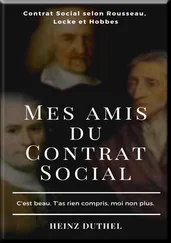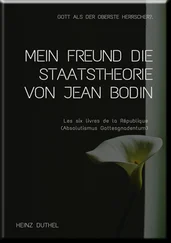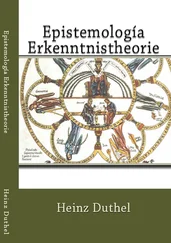In the course of its long history Buddhism has assumed a wide variety of forms. Because of its peaceful, non-dogmatic character, it has always adapted easily to the pre-existent cultures and religious practices of the people among whom it has spread, becoming in turn the fountainhead of a new culture and world view. So successful has Buddhism been in integrating itself with a country's indigenous culture that it is often difficult for us to discern the common thread that binds the different forms of Buddhism together as branches of the same religion. The outer surfaces differ so greatly: from the gentle, ceremonial Theravada Buddhism of Sri Lanka and Southeast Asia, to the contemplative and devotional practices of Far Eastern Mahayana Buddhism, to the mysterious ritualism of Tibetan Vajrayana Buddhism. Yet, though the outer faces of these Buddhist schools may differ drastically, they all remain rooted in a common source, the life and teaching of the man known to us as the Buddha.
Surprisingly, though the Buddha stands so far back from us in time, further back than all the later teachers who rose to eminence in the river of Buddhist history, it is still his voice that speaks to us most directly, in a language we can immediately understand, in words, images, and ideas to which we can immediately respond. If we place side by side the texts of the Chandogya Upanishad and the Buddha's Discourse on the Four Noble Truths, which are separated in time by perhaps only a hundred years, the former seems to come from a cultural and spiritual milieu so remote we can hardly comprehend it, while the latter sounds almost as if it had been spoken last week in Bombay, London, or New York. In attitude and perspective the Buddha comes so close to us it is hard to believe he is separated from us by a gulf of some 2,500 years.
That the Buddha's teaching should remain perennially relevant throughout the changing eras of human history, that his message should be undimmed by the sheer passage of time, is already implicit in the title by which he is most commonly known. For the word "Buddha," as is widely known, is not a proper name but an honorific title meaning "the Enlightened One," "the Awakened One." This title is given to him because he has woken up from the deep sleep of ignorance in which the rest of the world is absorbed; because he has penetrated the deepest truths about the human condition; and because he proclaims those truths with the aim of awakening others and enabling them to share his realization. Despite the shifting scenarios of history over twenty-five centuries, despite the change in world views and modes of thought from one epoch to the next, the basic truths of human life do not change. They remain constant, and are recognizable to those mature enough to reflect on them and intelligent enough to understand them. For this reason, even today in our age of jet travel, computer technology, and genetic engineering, it is perfectly fitting that the One who has Awakened should speak to us in words that are just as powerful, just as cogent, just as illuminating as they were when they were first proclaimed long ago in the towns and villages of Northeast India.
1. The Life of the Buddha
Although we cannot determine with absolute precision the dates of the Buddha's life, many scholars agree that he lived from approximately 563 to 483 BC; a growing number of scholars follow a different chronology which places the dates about eighty years later. As is natural with a spiritual leader who has made such a powerful impact on human civilization, the account of his life that has come down to us has been embroidered with myth and legend, which serve to bring before the mind's eye the loftiness of his spiritual stature. Nevertheless, in the oldest source on the Buddha's life, the Sutta Pitaka of the Pali Canon, we find a number of texts from which we can construct a fairly realistic picture of his career. What is striking about the picture given by these texts is that it shows the Buddha's life as a series of lessons which embody and convey the essential points of his teaching. Thus, in his own life, the person and the message merge together in an indissoluble union.
The future master was born into the Sakyan clan in a small republic nestled in the Himalayan foothills, in a region which at present lies in southern Nepal. His given name was Siddhattha (Skt: Siddhartha) and his family name Gotama (Gautama). Legend holds that he was the son of a powerful monarch, but in actuality the Sakyan state was an oligarchic republic, so his father was probably the chief of the ruling council of elders. By the Buddha's time the Sakyan state had become a tributary of the powerful state of Kosala, which corresponds to present-day Uttar Pradesh. Even the oldest suttas tell us that the infant's birth was attended by various wonders. Soon afterwards, a sage named Asita came to visit the baby, and recognizing on his body the marks of future greatness, he bowed down to the child in homage.
As a royal youth, Prince Siddhattha was raised in luxury. His father had built for him three palaces, one for each season of the year, and there he enjoyed himself in the company of his friends. At the age of sixteen he married his cousin, a beautiful princess named Yasodhara, and lived a contented life in the Sakyan capital, Kapilavatthu; during this time he was probably trained in the martial arts and the skills of statecraft.
As the years passed, however, when he reached his late twenties, the prince became increasingly introspective. What troubled him were the great burning issues we ordinarily take for granted — the questions concerning the purpose and meaning of our lives. Is the purpose of our existence the enjoyment of sensual pleasures, the achievement of wealth and status, the exercise of power? Or is there something beyond these, more real and fulfilling? These must have been the questions that rippled across his mind, for we find his own reflections recorded for us in a discourse called "The Noble Quest" (MN 26):
Monks, before my enlightenment, being myself subject to birth, aging, sickness and death, to sorrow and defilement, I sought what was subject to birth, aging, sickness and death, to sorrow and defilement.
Then I considered thus: "Why, being subject to birth... to defilement, should I seek what is subject to birth... and defilement? Suppose that, being myself subject to birth, having understood the danger in what is subject to birth, I seek the unborn, the supreme security from bondage, Nibbana. Suppose that, being myself subject to aging, sickness and death, to sorrow and defilement, I seek the unaging, unailing, deathless, sorrowless and undefiled state, the supreme security from bondage, Nibbana."
Thus, at the age of 29, in the prime of life, with his parents weeping, he cut off his hair and beard, put on the saffron robes of a mendicant, and entered upon the homeless life of renunciation. The developed Buddha biography adds that he left the palace on the very day that his wife gave birth to their only child, the boy Rahula.
Having left behind his home and family, the Bodhisatta or "seeker of enlightenment" (as he is now called) headed south for Magadha (present-day Bihar), in whose environs small groups of seekers were quietly pursuing their quest for spiritual illumination, usually under the guidance of a guru. At the time northern India could boast of a number of accomplished masters famous for their philosophical systems and achievements in meditation. Prince Siddhattha sought out two of the most eminent, Alara Kalama and Uddaka Ramaputta. From them he learned systems of meditation which, from the descriptions in the texts, seem to have been forerunners of Raja Yoga. The Bodhisatta mastered their teachings and systems of meditation, but though he reached exalted levels of concentration (samadhi), he found these teachings insufficient, for they did not lead to the goal he was seeking: perfect enlightenment and the realization of Nibbana, release from the sufferings of sentient existence.
Читать дальше












